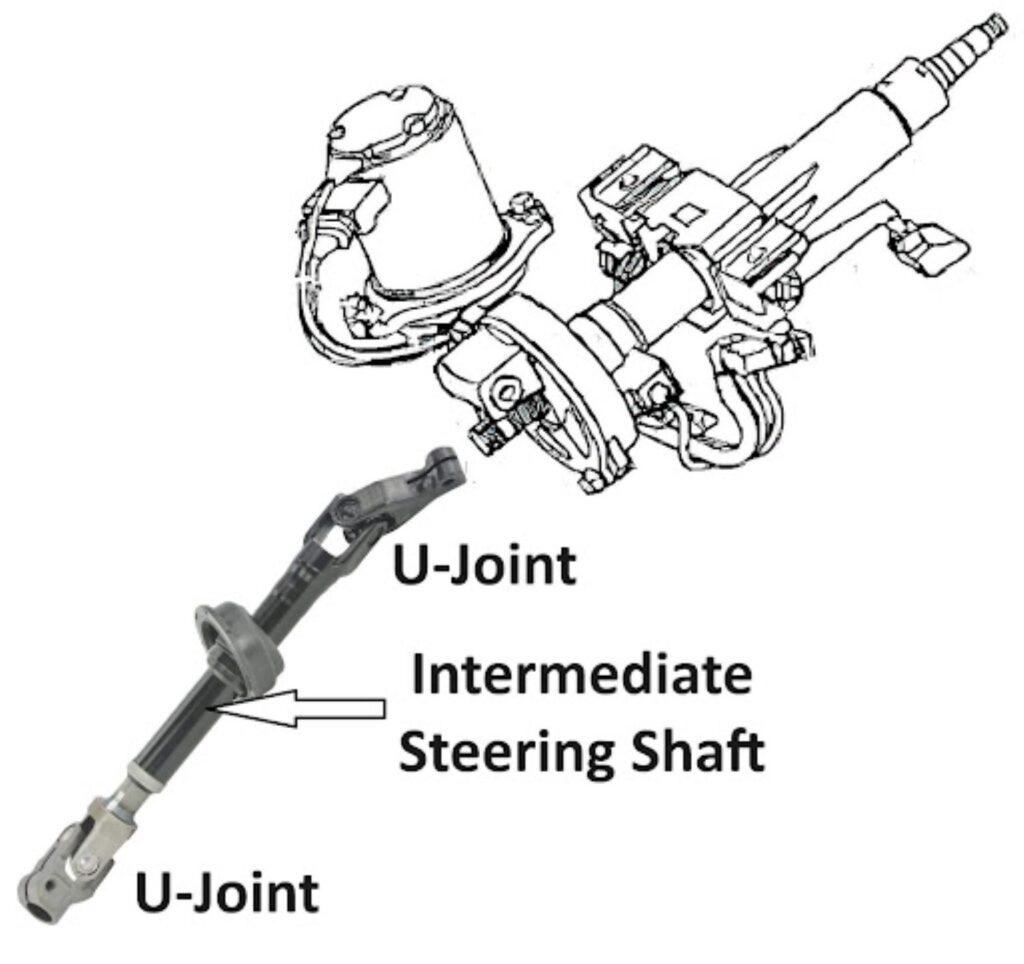Your vehicle’s intermediate steering shaft connects the steering gear pinion to the lower end of the steering column.

Symptoms of a Bad Steering Shaft
There are a number of symptoms associated with a bad steering shaft. Any one of these issues can alert you that something’s wrong, and that you need to have your vehicle assessed as soon as possible.
Rough Wheel Turns
Most modern vehicles have power steering so that the steering feels smooth and easy, whatever the vehicle and the driver’s physical build are.
But driving won’t feel very smooth if there’s something wrong with the u-joints on the ends of the intermediate steering shaft (see Illustration).

Irregular Steering Wheel Positions and Grip
In a power steering system, the steering wheel will always return to the center position because of the caster settings. When you turn the wheels, normal positive caster settings will cause the front of the vehicle to lift very slightly so that the lowest it sits is right in the center.
Gravity and caster angles make the steering wheel naturally return to the center after a turn; this is where it wants to be if everything is normal. If the u-joints in the intermediate shaft are dry and stiff, it may not easily return to the center. Other issues, like dry ball joints can cause this as well.
Grinding or Clicking Sounds When Turning
If you start hearing grinding or clicking sounds at the base of the steering column when turning, it’s yet another sign that your steering shaft might have issues. It’s best to ask a trusted mechanic to check your steering shaft as soon as you notice these strange noises when you steer.
Uneven Effort Turning the Steering Wheel
If there are serious issues with the u-joints in your steering shaft, the steering wheel might require uneven effort while turning the wheel during parking lot maneuvers. It might feel tight-then-loose-then-tight again while rotating the steering wheel.

Can a Worn Steering Rack be a Cause of a Bad Steering Shaft?
The steering shaft is directly connected to the steering rack and relies on it to function properly. If it takes more effort to steer the vehicle for any reason at all, the u-joints on each end of the intermediate shaft may wear out prematurely so that the steering doesn’t feel right even after the hard steering issue is resolved.
Can You Drive with a Bad Steering Shaft?
It’s best to avoid driving with a bad steering shaft, especially if the steering wheel is hanging limp. If your steering fails while driving, it could spell disaster. Now that you’re familiar with the symptoms of a bad steering shaft, you’ll know when to seek help from a trusted mechanic.
Stay In Control With OE-Grade Replacement Steering Shafts
A properly functioning steering shaft is necessary to have good control over your vehicle’s steering. You should never ignore steering issues because it’ll compromise your confidence when it comes to steering. Steering system symptoms like uneven effort when turning the wheel can also be unsafe since they’ll rob you of control over your vehicle. Have a faulty steering shaft? Don’t hesitate to get a replacement here at CarParts.com.
Whether you have a car, truck, or SUV, finding a replacement steering shaft is easy here at CarParts.com. We offer a wide range of steering shafts that are made to fit specific vehicles. Choose from parts made by the best aftermarket manufacturers.
Thanks to our vehicle selector, it’ll only take a few minutes to find the steering shaft that you need. Simply enter your vehicle’s specifications into the required fields and you’ll see products compatible with your ride.
Driving with a compromised steering shaft is risky. Luckily, CarParts.com has a wide selection of steering shafts. Check out our catalog and shop for a new steering shaft today!
Any information provided on this Website is for informational purposes only and is not intended to replace consultation with a professional mechanic. The accuracy and timeliness of the information may change from the time of publication.






























